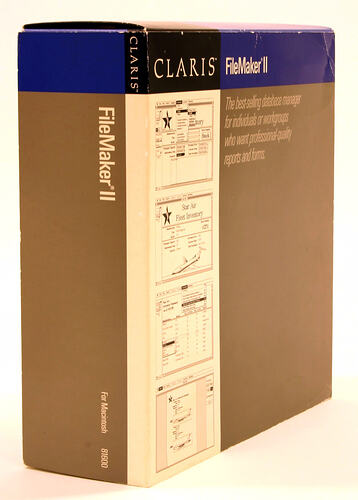An example of a flat-file database is a set of cards in a box where each card contains the details of a book, such as the author, title and publisher. Each title is likely to be unique, but there are likely to be many titles which have the same author and/or publisher. Such a flat-file database, whether cards in a box or on a file in a computer, requires the multiple entry of an author's name where he or she has authored more than one book and may also require the multiple entries for publishers if they have published more than one book. A search on an author's name, whether cards in a box or records in a database, will find all titles by that author, and the author and publisher will appear beside each title.
A spreadsheet is a form of flat-file database.
Relational databases require the entry of authors, titles and publishers in full only once. In the example of a relational bibliographic database, it will use tables to store information associated with title, author and publisher. The title, author and publisher is each given an identity (ID) number.
A consequence of data only being entered once is that discrepancies between data entered on multiple occasions will be avoided. This is called data integrity.
A search on the author will list all books which have that author's ID, and will display the relevant title and publisher. It not only requires less data entry, but enables more refined searching.
More Information
-
Keywords
-
Authors
-
Contributors
-
Article types

